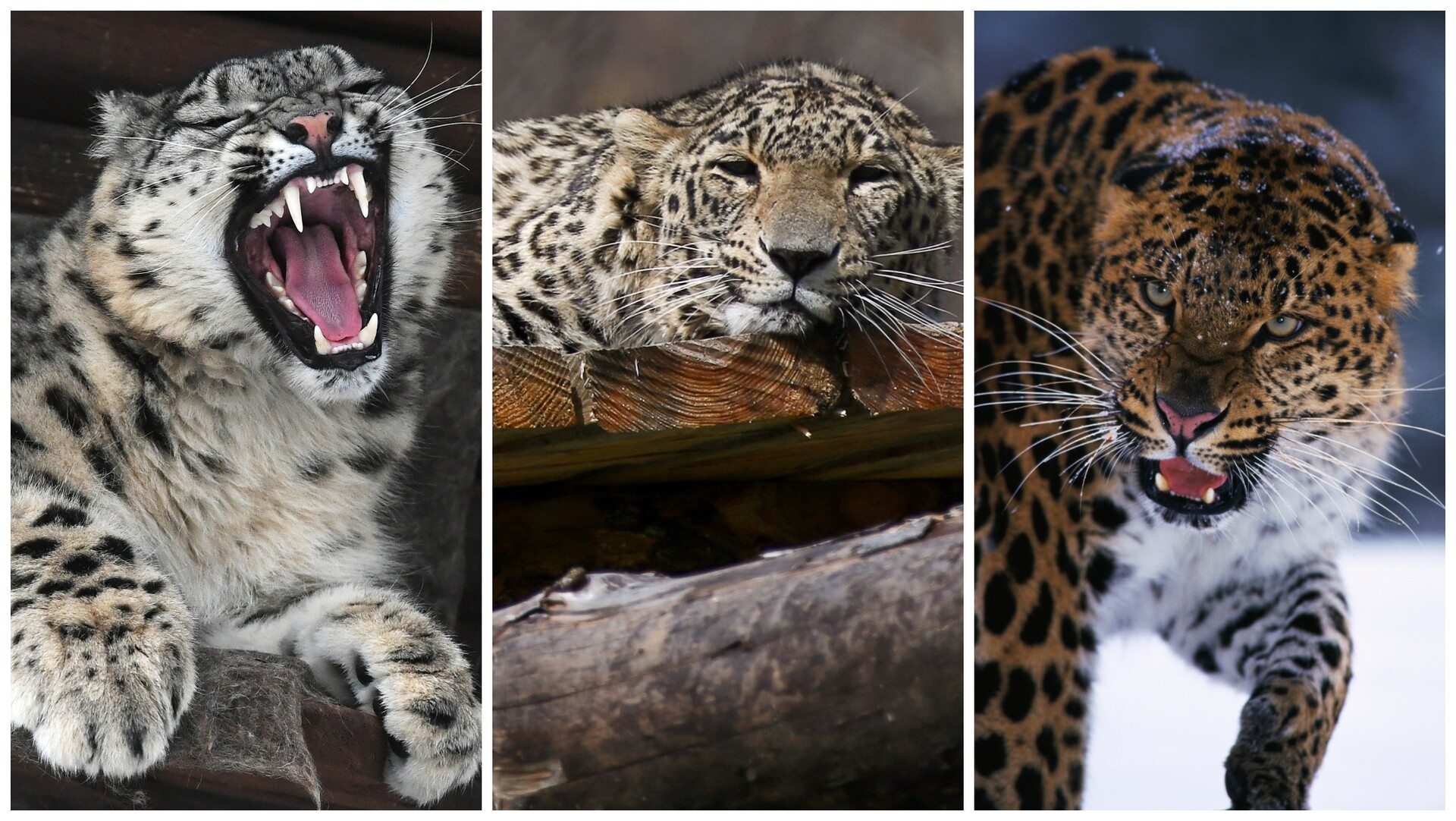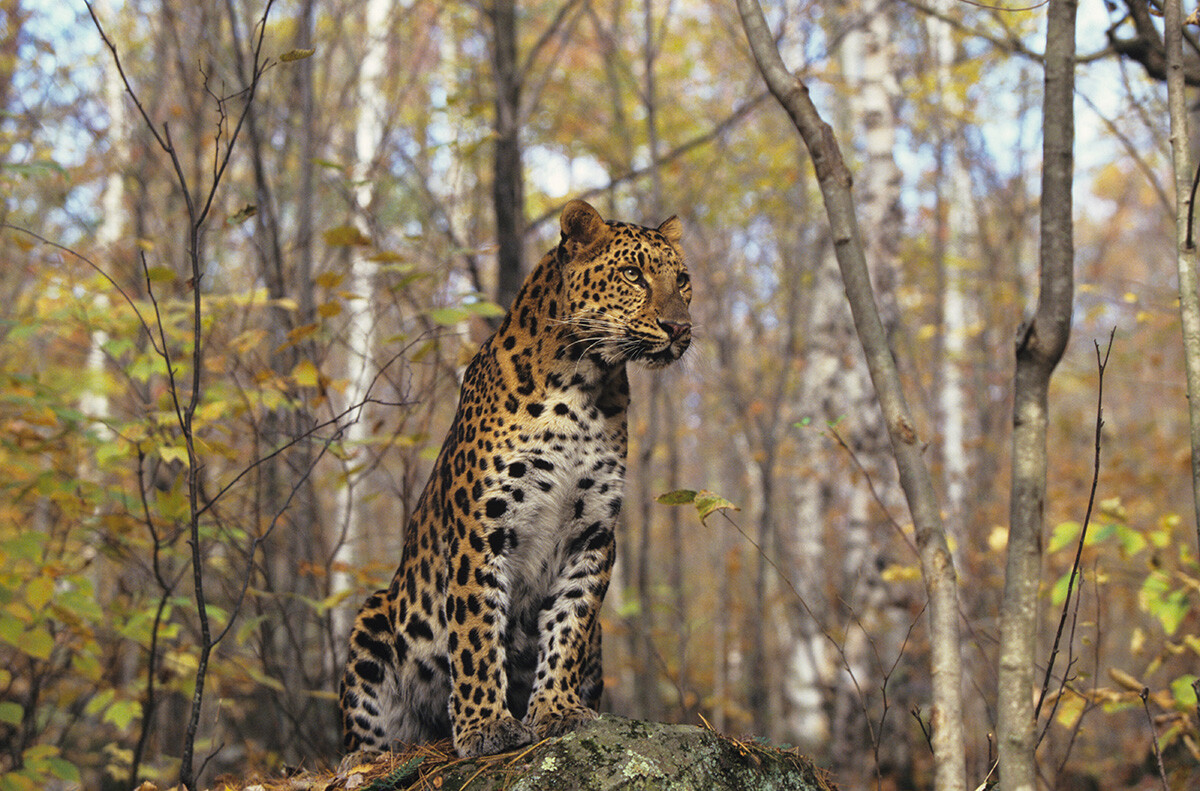
We have already written about the chances of bumping into a tiger in Russia, but what about leopards? It turns out that this type of wild cat also lives in Russia - moreover, there are as many as three different types. And all of them are very rare.

The northernmost leopard subspecies in the world prefers the impenetrable taiga and fluffy snow of the Maritime Territory to the tropical jungle. Outwardly, it is about two-thirds the size of its African relatives (weighing no more than 50 kg), but it is no less sleek and just as spotted. Scientists distinguish every leopard by the individual pattern on their fur coat.
In the Far Eastern (or Amur) subspecies, the black spots turn pale in winter, which improves the cat’s camouflage in the Maritime Territory (no, its vivid color doesn’t give it a disadvantage while hunting, since its prey - roe deer - has black and white vision).
The Far Eastern leopard has long been a coveted target for poachers and, although hunting has been banned since 1956, this subspecies is on the verge of extinction. There are about 130 of them in total: 120 live in Russia, mostly in the Land of the Leopard National Park, while the rest in China, in an area bordering Russia. There are also travelers among them who freely cross from one country to the other without any documents. And who would try to ask them for their papers?

This leopard lives in the mountains and has a particular fondness for rocks and stone-strewn landscapes. The Asia Minor leopard, or Caucasian leopard, was regarded as a lost species until recent times. Long ago, it inhabited the Caucasus and Central Asia, but, by the 1950s, it had practically been exterminated.
Measures to revive the population in Russia began in 2006. Several pairs of the animals were brought from the wild to the Sochi National Park from Turkmenistan and Iran (where they still survive) and also from zoos in Portugal and Sweden. The leopards subsequently mated and their offspring have been spotted in Chechnya and North Ossetia. The coat of arms of North Ossetia, as it happens, depicts precisely this subspecies of leopard.
Four native and wild leopards currently live in the Caucasus, as well as 9 under the supervision of zoologists: three in Sochi, five in North Ossetia and one female in Kabardino-Balkaria.
The Asia Minor leopard is a little larger than the Far Eastern leopard, while, in winter, its fur is very light in color with a grayish tinge. Its spots are not black, but brown.

The snow leopard, or irbis, lives at the highest altitudes of all the leopards. Of course, all cats like to climb as high as they can, but the snow leopard lives in places that not all daredevil climbers could manage to reach.
This wild spotted cat can be found at 1,500-6,000 meters above sea level in the Tian Shan mountains, the Pamirs and the Himalayas. In Russia, the irbis lives in the southern part of Siberia, as well as in the Eastern Sayan and Altai mountains. There are only a few thousand irbis left in the world and they are protected by the state everywhere.
Just look at their agility as they leap up and down mountainsides:
Like the other Russian leopards, it is practically impossible to get a sighting of them in the wild as they are so rare and secretive. The irbis also has a very long tail - around a meter in length on average. And it has the amusing habit of carrying it in its mouth. We explain why it does this here.

This really cute forest cat lives in the Maritime Territory on the shores of Lake Khanka on the border with China and in the Land of the Leopard National Park. It really does resemble a small leopard and when it goes hunting it is a serious predator.
The chances of seeing a cat like this in the wild are minimal, since they are also very rare. Nevertheless, they are capable of visiting humans if they think they have a surplus population of geese and chickens! Most importantly, never attempt to domesticate one. Read more here.
If using any of Russia Beyond's content, partly or in full, always provide an active hyperlink to the original material.
Subscribe
to our newsletter!
Get the week's best stories straight to your inbox